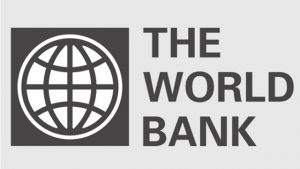 WASHINGTON, United States (CMC) — For the first time since the financial crisis, the World Bank says principal repayments on external debt held by low- and middle-income countries, such as those in the Caribbean, exceeded lending inflows.
WASHINGTON, United States (CMC) — For the first time since the financial crisis, the World Bank says principal repayments on external debt held by low- and middle-income countries, such as those in the Caribbean, exceeded lending inflows.
According to the bank’s International Debt Statistics 2017 (IDS 2017), released here on Wednesday, short-term debt flows reversed to an outflow of US$398 billion, about three times higher than the inflow in 2014.
Meanwhile, long-term debt flows remained positive but plummeted to US$214 billion, half the previous year’s level, IDS 2017 says. As a result, it says external debt stock declined by 6 per cent, to US$6.7 trillion, equivalent to an average of 25 per cent of Gross National Income (GNI).
Looking beyond debt, the World Bank said foreign direct investment equity flows to low- and middle-income countries “proved resilient”, adding that, with debt flows negative, net financial flows (debt and equity) fell to US$377 billion, one-third the level reported for 2014.
The Washington-based financial institution said the combined external debt stock of low- and middle- income countries fell six per cent, to US$6.7 trillion.
“Net debt outflows and the effect of exchange rate changes vis-à-vis the US dollar were the main contributors to the decline.”
The bank said external debt stocks remained moderate in relation to GNI, an average of 25 per cent, and to exports, an average of 98 per cent.
Net debt outflows in 2015 were US$186 billion, “a marked contrast to inflows of US$540 billion in 2014, and reflected a sharp contraction in short-term debt flows, which registered a US$398 billion outflow, compared to net inflows of US$130 billion in 2014,” the World Bank said.
It said net financial flows (debt and equity) fell to US$377 billion, a third of the 2014 level (US$1,157 billion).
The World Bank said foreign direct investment (FDI) “proved resilient, holding steady at US$543 billion in 2015. It said portfolio equity flows remained positive for the fourth successive year but fell to US$20 billion, one quarter the 2014 level, “reflecting investor uncertainty centred around prospects for China”.
As a share of total GNI in low and middle-income countries, the World Bank said net financial flows fell by 1.5 per cent from an average of 4.9 per cent in 2013-2014.
The bank also said high-income countries reporting quarterly external debt confirm their debt levels are, on average, much higher than in low- and middle-income countries.
For most high-income countries, the World Bank said government debt-to-GDP (gross domestic product) ratios (external and domestic debt combined) moderated in 2015.
The World Bank said IDS 2017 draws from comprehensive databases of debt statistics collected from low and middle-income countries, and quarterly external and public sector debt, including from high-income economies.
“These comprehensive international debt statistics are a vital input for debt managers and researchers around the world working to improve the management of global capital flows,” said Haishan Fu, director of the World Bank’s Development Data Group that produced the report and database.
